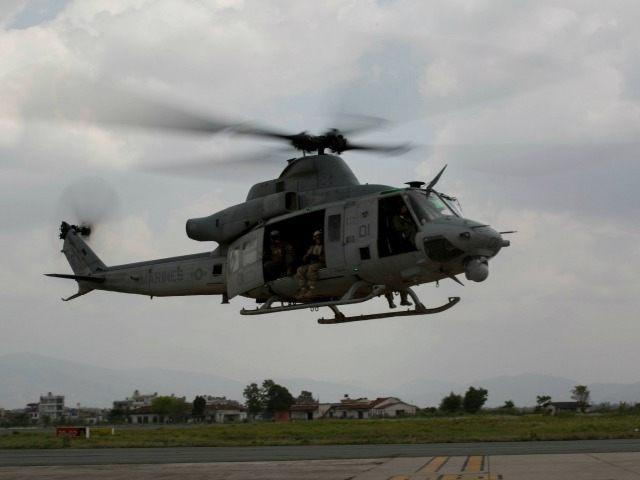The search mission continues for a U.S. Marine Corps UH-1Y Huey helicopter that went missing Tuesday evening in Nepal with six Marines and two Nepalese soldiers onboard.
“So far, two UH-1Y Hueys, two MV-22 Ospreys, one Indian Mi-17 and three Nepalese helicopters have searched for the [helicopter] that went missing May 12 near Charikot, Nepal, while conducting humanitarian assistance and disaster relief operations. Augmenting the aerial search are Nepalese troops — a special forces platoon and a battalion-sized element,” said the Pentagon in a statement.
“We are still trying to locate it. There is no evidence to prove that it has crashed,” said U.S. Marine Corps spokeswoman Capt. Cassandra Gesecki, reports Reuters.
The pilot of the missing aircraft has been identified as Marine Capt. Chris Norgren from Wichita, Kansas, reports KSN.com. Other U.S. crew members have not yet been identified.
Search efforts are reportedly focusing on the area around Sunkhani village of Dolakha district, which is the epicenter of Tuesday’s 7.3 magnitude earthquake.
More than 400 Nepali soldiers have been searching the area on foot since the helicopter disappeared.
Nepali troops are also searching the Tamakoshi River on boats.
The helicopter’s crew was heard over the radio saying they were having fuel problems before the aircraft went missing.
Reuters reports that a two-man U.S. civilian team in Koshikhet village was using a drone to search for the missing helicopter.
“We are using infrared vision to look for hotspots and any signs of life,” drone operator Shepherd Eaton, from GlobalMedic, a U.S. aid agency that specializes in search and rescue, told Reuters.
The two-man team was reportedly working with the Nepali army.
“After two full days of searching, no sign had been found of the Huey, which was on an aid mission in Dolakha district near Tibet when it lost contact on Tuesday,” notes Reuters. “The Huey was kitted out with a satellite location device, a radio and an emergency beacon. It may have come down in a ‘dead zone’ for radio signals, though, making it hard for searchers to locate it,” it adds.

COMMENTS
Please let us know if you're having issues with commenting.